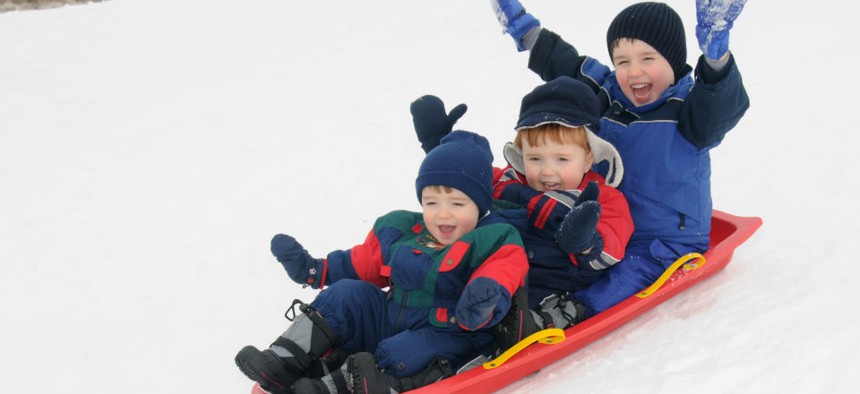Cities Are Looking to Ban Sledding Because It Could Be Way Too Expensive Not To

Rossario/Shutterstock.com

Connecting state and local government leaders
Local governments can be held liable for injuries that occur in parks and other public areas.
Some things in life that are fun are also dangerous. Sliding down a snow-covered hill on a sled—or a toboggan, or an inner tube, or a cafeteria tray—is one of those things. Sledding is particularly fun and dangerous if the bottom of one’s sled is slick (video) or the snow is icy.
Or while traveling down the hill headfirst.

tammykayphoto/Shutterstock.com
It is widely considered a wholesome, family-friendly activity, one whose risks are generally accepted and often ignored by children and their parents.
Until someone gets hurt, that is. Then legal action can ensue.
Local governments can be held liable for injuries that occur in parks and other public areas—and with at least 20,000 sledding injuries occurring in the US each year, public officials have plenty of potential lawsuits to be wary of. For this reason, as the Associated Press recently reported, a growing number of US cities are banning sledding on public property. Following sledding accidents, one Nebraska family won a $2-million payout from the city of Omaha and another family secured a $2.75-million settlement from Sioux City, Iowa. Both cases involved individuals who survived their accidents but were paralyzed for life.
An employee of the city of Dubuque, Iowa, which is banning sledding in all but two of its 50 parks this year, acknowledged to Newsweek that the ban isn’t likely to be too strictly enforced. At worst, she suggested, people who repeatedly ignore requests to stop sledding where it’s prohibited will be subject to fines. The city of Omaha tried to ban sledding at a popular hill one winter, but residents continued sledding there anyway and the city gave up on enforcing the rule.
In Washington, DC, the law mandates that children under the age of 16 wear helmets when sledding. A study of pediatric sledding-related injuries between 1997 and 2007 found that head injuries occurred in 34% of all the cases in which individuals under age 19 went to the emergency room after sledding accidents.
Eleven-year-old boys account for more of these accidents than other children, according to the same study.
(Top image via Rossario/Shutterstock.com)
NEXT STORY: New York's Unfinished Tale of Two Cities





